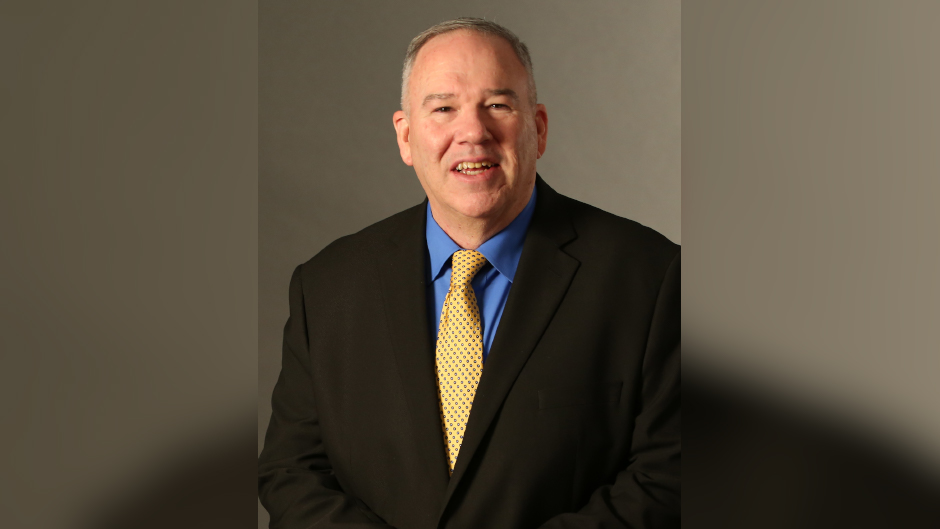An expert in simulation design, development, and assessment, Jeffrey Groom, PhD, CRNA, FSSH, was a key member of the team that launched the facility now known as S.H.A.R.E.™ Dr. Groom is also a U.S. Air Force veteran (captain) and certified registered nurse anesthetist who served as chair of the Department of Nurse Anesthetist Practice at Florida International University for 10 years before returning full-time in 2017 to his first academic love: simulation.
“After many years in academia and serving as a department chairperson, I wanted to see simulation come full circle in my career, and in a big way. What better challenge and opportunity than to come onboard to oversee the construction and initial launch of the Simulation Hospital,” he says. “S.H.A.R.E.™ was one of the first of its kind in a new approach to simulation center design—replicating the clinical spaces and workflow of a hospital and health care system, where older center designs had been based on a series of unrelated individual simulation rooms.”
Most recently a Professor of Clinical and the Associate Dean for Simulation Programs at the University of Miami School of Nursing and Health Studies, Groom continues to expand simulation-related opportunities and initiatives in his current role as director of special projects for S.H.A.R.E.™ His position entails interfacing with other schools and units within UM and UHealth, as well as individuals and organizations outside of UM, on projects ranging from simulation education for specific groups, research and development, non-education use of the facility for film or photo productions, and other “fee-for-service” partnerships. He also manages American Nurses Credentialing Center continuing nursing education development.
“Our primary mission is to facilitate experiential learning opportunities for all learners, whether they are degree students or alumni and clinicians engaged in lifelong professional development and education,” explains Groom. “Our secondary mission is to leverage our expertise, experience, and facilities to advance simulation education and provide a venue for conferences, research, design and development, and other nontraditional activities, such as set locations, corporate training, simulation construction design, and so on.”
Ongoing projects include simulation education sessions for a number of UM/Jackson Memorial Hospital residency programs and the UHealth Nurse residency program, as well as professional development courses, such as life support recertification, for students, faculty, and community clinicians. “As we resume in-person education sessions on campus, we expect to expand these types of offerings,” Groom says.
Four years after its grand opening, he notes, S.H.A.R.E.™ is still unique for its immense 41,000-square-foot size and diversity of clinical features housed within one school—particularly a nursing school—with more centers around the country beginning to adopt the simulated hospital concept.
“I was fortunate to be at the start of a movement to integrate simulation as an instructional methodology in health care education,” says Groom, an inaugural founding member and Fellow of the Society for Simulation in Healthcare. “And I am very proud to see former students of mine, who were trained with simulation in their programs, now becoming simulation faculty and leaders themselves.”
Groom’s own exposure to simulation education first came decades ago as a frontline provider. “I started my career as a paramedic,” he recounts. "We naturally incorporated realistic drills and practice into our training. It was not called ‘simulation’ back then and was not as well-guided in educational theory, but it was a logical progression from training room, to field drills, to real-world experience. As an undergraduate, I wrote a project proposal for a course to incorporate EMT training using simulation-based instruction for the local fire service, and it went on to be funded when I graduated.”
Later, while attending nursing school in South Florida, Groom found additional ways to make an educational impact through simulation. “I was very surprised that in nursing and medical school at that time, it was the norm to go from classroom to real patients, with no practice for the real thing, or simulation, in between the two,” he says. “I was showing my nursing instructors how to create nursing practice drills or simulations using CPR manikins. The rest is history. My master's thesis and doctoral dissertation both centered around simulation-based education. There has never been a time since then in which simulation has not been part of my focus and interest.”
As devoted as Groom has remained to pioneering this exciting journey through the world of simulation-based learning, he admits he’s found no virtual substitute for his other favorite pursuit: traveling! “I am a million-mile frequent flyer and currently mapping out post-COVID pandemic travel options,” he says enthusiastically. Next up is Alaska. In Groom’s view, both travel and simulation share an important appeal—there is always something new to explore.
Visit SHAREsonhs.miami.edu or call 305-284-2709 to explore opportunities for your business at S.H.A.R.E.™

